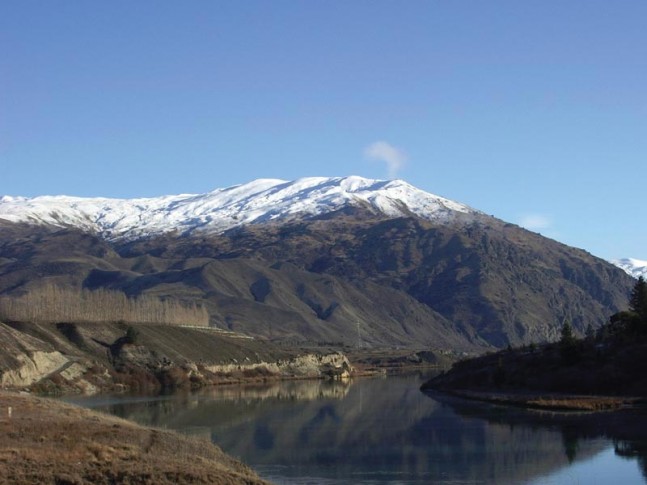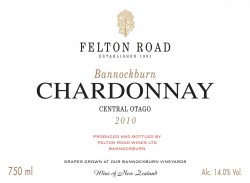 Antipodean Chablis
Antipodean Chablis
Are you a Chablis drinker? A chardonnay purist who relishes the ethereal clarity of Chablis; a wine infused with flinty minerality and a saline quality that speaks so loudly of the soils it hails from it’s unmistakable. Then there’s the slippery, silky texture, largely unadulterated by oak, it’s glassy, lubricous, tantalizingly tangy palate invigorated by exhilarating steely acidity, a wine bursting with energy and freshness.
Some of the wine drinkers I know don’t like chardonnay; but they like Chablis! The demarcation here is not the varietal flavours, rather the secondary characteristics of oak, or intrusion of oak, along with the domineering characters of malo-lactic fermentation, the combination often imparting too much broadness and syrupy richness for some peoples taste.
Curiously, the best Chablis I have drunk, and I am talking Domaine Raveneau, has in fact seen oak barrels, although older oak and larger barrel formats, allowing a degree of oxygen in the maturation process. Raveneau wines can be a bit grubby too, in a nice way, yes a bit of matchstick, whiffy esters and dead yeast cells – those feral bits from wild fermentation and lees contact – amongst gooey cheese/lactose pongs. Great stuff – personality!
Essentially chardonnay does not do it for crisp white wine drinkers, unless they have discovered Chablis. And I can’t say I have ever heard anyone raving about un-wooded chardonnay from anywhere else in the world. Many complain that most new world un-wooded/lightly-wooded chardonnays are too pristine, mono-fruity, lacking energy – and well, no personality.
And yet chardonnay is the grape world’s chameleon, easily adapting to climate and soils practically anywhere, so why can’t other wine regions emulate Chablis. This is of course a strong testament of terroir, and most would attribute Chablis’ unique characteristics to the exclusivity of the regions individual limestone, Kimmeridge clay.
Above ground, Chablis is one of the coolest climates where chardonnay is grown, indeed a marginal climate that is borderline with Champagne and distinctly cooler than the relatively warmer, and significantly riper profile of chardonnay grown in the Cote de Beaune to the south.
Thus, logic would have it that if you are going to get anywhere close to Chablis, in style, head for a cooler climate. In the southern hemisphere, that means New Zealand, more specifically in the deep south of the South Island, Central Otago, the southernmost wine region in the world.
If I were to be really cheeky, in a broad generalization, if you hypothetically inverted the map of white burgundy within New Zealand, one could draw a loose correlation from north to south (or south to north in Burgundy) that the warmer regions of Gisborne and Hawkes Bay are the Mâconnais, (allotting Kumeu River in North Auckland in its own special climat), Martinborough Corton-Charlemagne, Nelson Chassagnge-Montrachet (see, you were right Judy!), Waipara & Pyramid Valley and beyond to Central Otago, Chablis.
Now that should get me in to all sorts of trouble with New Zealand winemakers, but hell, I’ll stick my neck out even more and say Neudorf Moutere is the Montrachet of New Zealand, and despite the misinformation of the ageing qualities of new world chardonnay, Neudorf easily cruises past 10 years in bottle.
Personally, I think New Zealand chardonnay is greatly underappreciated and I have watched the international press change their tune over the years, only now really comprehending how good they are, with naturally higher acidities and a relatively restrained style compared to across Tasman Sea in Australia, where they road the wave of popularity with their beefier style (fashionable at the time). That said, things have changed a lot in Australia too… Another Brilliant Chardonnay!
I’ve probably stretched the Chablis association a bit much by now; actually it’s not about emulating Chablis at all. It’s about grasping that chardonnay is not just a one trick pony and always at the mercy of manipulative winemaking. It can show a distinct sense of place equally as well as the great soil messenger riesling, if you treat it right.
Take for example, Felton Road Bannockburn Chardonnay. Here’s a wine that’s explicitly narrative of its mountainous, if not arid and tortured terrain; redolent in minerals and as exhilarating as the mount peaks and glaciers that surround it. It is an extraordinary terroir, in every respect; the coolest region in New Zealand and yet the warmest sweet spot in Central Otago.

Bannockburn, Central Otago, New Zealand
The soils are incredibly complex; deep down the parent rock is schist, even deeper fine dendritic calcium carbonate, the decomposed shells of marine organisms and genesis of limestone. The top-soils are “Lochar” – shallow fine sandy loam and schist gravels with a thin loess covering (all sound very Austrian doesn’t it). The schist gravels can be seen coming all the way to the surface amongst friable sandy gravels interspersed with bands of sandy clay loam.
Then there’s the carpet of wild thyme, everywhere, filling the air with its Provence-like scent and yet the icy-crisp winters air dispelling this Mediterranean illusion, as surreal as the profusion of fool’s gold covered schist rocks glinting up from the ground, although they say there is still gold up in thar hills.
Everything about this chardonnay is harmonious, simpatico to the entire estate; painstakingly run (and certified) on biodynamic principals; non-interventionist winemaking (honed to an art form by arguably New Zealand’s greatest/humblest winemaker, Blair Walter) with a gravity-fed winery (no pumps), wild yeast (natural-indigenous) fermentation, completely natural-oxidative handling, malo-lactic as simple as opening the winery doors to the spring air, and “oak is a subtle companion not a loud guest”.
The conductor is Nigel Greening, proprietor of Felton Road and precognitive vigneron who took the pioneering research of Stuart Elms to a level no one imagined; a stratum of quality and degree of global respect unparalleled in the new world. He is an intense individual, highly intellectual yet perpetually jovial, insanely energetic, ravenously gastronomic and veraciously looking for the very best out of every day in life.
Veracious is also a good surmising descriptor of the 2009 Felton Road Bannockburn Chardonnay; it’s about as honest as chardonnay comes. Everything and yet nothing has been done to it. Everything in terms of incredible devotion to running a holistic vineyard and property and nothing in terms of adulteration or intervening with a natural process.
And yes, it’s a dead ringer for Chablis, stylistically with the flirtatious fruit of Mont de Milieu yet an energy and personality of its own. (Still, I’d love to stick it in a blind line-up of Chablis!). Frankly, there’s no other chardonnay like it in Central Otago, except perhaps Chard Farm Closeburn Chardonnay in a similar vein, which points towards and untapped potential for the region with this variety. Makes sense to me – chardonnay, pinot noir.
Driving home to point, the emphasis here is on texture and structure, and this wine has an incredible ethereal brightness, with the rounded, slippery soft texture of virgin olive oil and gossamer of oak and grape tannin structure yet crisp, refreshing acidity and mouth-filling fruit succulence that engulfs the senses, moreover slides down (effortlessly) leaving one reaching for the next glass.
I recently tired the 2010 Felton Road Bannockburn Chardonnay, only just bottled, which was in fact the inspiration for this article; a wine that struck me as so pure and redolent in minerals, yet plush and seductive, bursting with grapefruit and citrus mouth-watering succulence; so completely harmonious and approachable now, it reminded me so much of top Chablis. Greening says it’s a characteristic of the vintage and Central Otago 2010s will have this attractiveness about them.
This prompted me to try the 2009, and as it turns out, several members of the Sommeliers Association of Singapore will be joining me and Nigel Greening for a mini vertical of Felton Road Chardonnay, paired to curries (in support of Curry Day in Singapore) at Chat Masala Too!, my favourite Indian restaurant here. To which I will post a follow-up article and tasting notes.
My note on Felton Road Bannockburn Chardonnay 2009: Freshly cut golden delicious apples, nashi pear and more subtle grilled pineapple1 mingles with dried banana, mealy-muesli nuance – telltale signs of lees contact, a lurking custard-like sweetness that is very alluring, then turning a bit more sauvage with blanched almond skins and a profusion of minerality – wet pumice, cool sandy beach and a talc nuance – becoming steely with the freshness of mountain air and nose tingling white pepper and horseradish spiciness.
Silky, airy-light palate entry, beautifully balanced with seemingly no oak, slides through the mouth an intense lemon-edged tanginess followed by mouth-watering, persistent grapefruit flavours, all quite taut and energetic really, catching one a little off-guard considering the soothing textures, with a late charge of fresh ginger spiciness and a savoury, almond skin delicate (attractive) bitterness that makes it look rather more European than new world to me…and yet the wine abounds in its Central Otago mountain air freshness, perhaps a subconscious iconographical influence I have, once you have seen the breathtaking, mountainous scenery here its embedded in the olfactory senses. Purchase in multiple cases as this will easily become your house white.
 Whilst Felton Road production is tiny, they are widely distributed throughout the world; available in Singapore through The Cellardoor www.thecellardoor.com.sg, Asiaeuro Wines in Malaysian www.asiaeurowines.com, Watson Wine Cellars in Hong Kong www.watsonswine.com, visit their website to find an importer in your part of the world http://www.feltonroad.co.nz/distribution/
Whilst Felton Road production is tiny, they are widely distributed throughout the world; available in Singapore through The Cellardoor www.thecellardoor.com.sg, Asiaeuro Wines in Malaysian www.asiaeurowines.com, Watson Wine Cellars in Hong Kong www.watsonswine.com, visit their website to find an importer in your part of the world http://www.feltonroad.co.nz/distribution/
1/ Borrowed descriptor from Judi Finn at Neudorf Estate, who describes there Moutere Chardonnay as often having a subtle grilled pineapple nuance, that is perhaps associated to the Mendoza clone and prevalent in New Zealand plantings.
|
|
Tweet |






No comments to Felton Road Bannockburn Chardonnay 2009 & 2010 Central Otago, New Zealand | Comments Feed
No comments yet
The comments are closed.